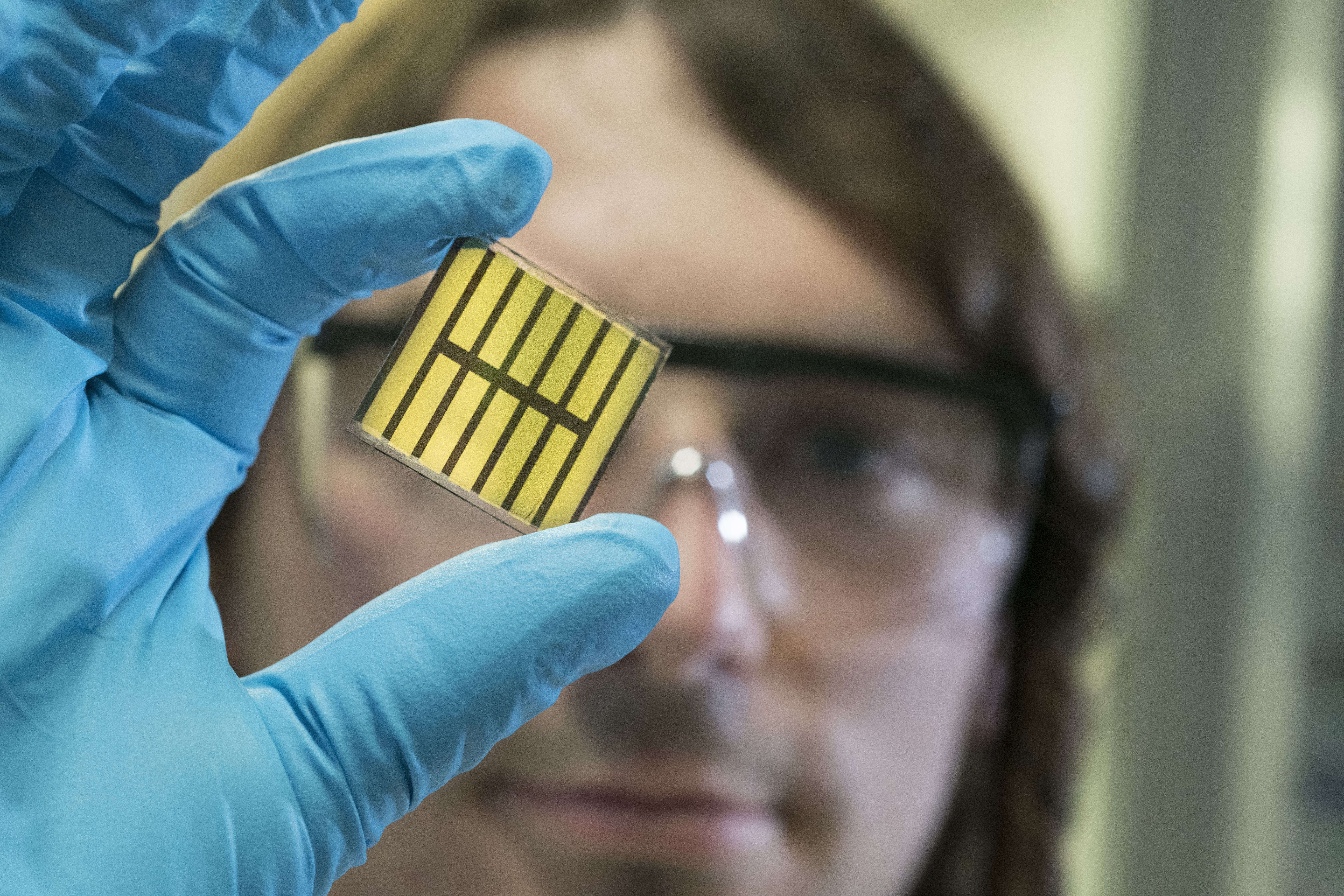German university the Karlsruhe Institute of Technology (KIT), the Center for Solar Energy and Hydrogen Research Baden-Würtetemburg (ZSW) and CIGS module manufacturer Nice Solar Energy have announced an ambition to design tandem PV modules based on CIGS and perovskite, which they say can theoretically achieve efficiencies well above 30%.
The joint ‘Capitano’ project will run for three years and has received more than €5 million from Germany’s Federal Ministry for Economic Affairs and Energy.
Within the project, ZSW will focus on developing CIGS modules tuned to particular absorption spectra in order to create the best synergy with a perovskite layer and to be able to trap as much of the light spectrum as possible. That will include optimizing intermediate and transparent contact layers between the two cells.
BIPV application
KIT’s input will focus on developing new materials and processes for the production of perovskite solar cells and modules and investigating scalable manufacturing techniques. The institute says it will particularly focus on slot casting and gas phase deposition methods. KIT will also develop a light management concept for the modules and take responsibility for yield calculations.
Popular content
German-headquartered Nice Solar Energy will evaluate industrial scale production. The company will provide CIGS modules for the production of tandem products and will carry out cost comparisons versus single junction CIGS solar modules, based on a hypothetical production capacity of 300 MW.
“We are developing the next generation of highly efficient thin-film tandem solar modules with an efficiency of more than 30%,” said Ulrich W Paetzold, junior research group leader at KIT. “Promising fields of application are, for example, highly efficient solar modules for building-integrated photovoltaic [BIPV] solutions.”
As well as the potential for high efficiencies, CIGS-perovskite tandem devices offer the prospect of lightweight solar modules which are cheap to process. The current efficiency record for the technology stands at 24.6% and was set last September by Belgian research institute imec.
This content is protected by copyright and may not be reused. If you want to cooperate with us and would like to reuse some of our content, please contact: editors@pv-magazine.com.



By submitting this form you agree to pv magazine using your data for the purposes of publishing your comment.
Your personal data will only be disclosed or otherwise transmitted to third parties for the purposes of spam filtering or if this is necessary for technical maintenance of the website. Any other transfer to third parties will not take place unless this is justified on the basis of applicable data protection regulations or if pv magazine is legally obliged to do so.
You may revoke this consent at any time with effect for the future, in which case your personal data will be deleted immediately. Otherwise, your data will be deleted if pv magazine has processed your request or the purpose of data storage is fulfilled.
Further information on data privacy can be found in our Data Protection Policy.